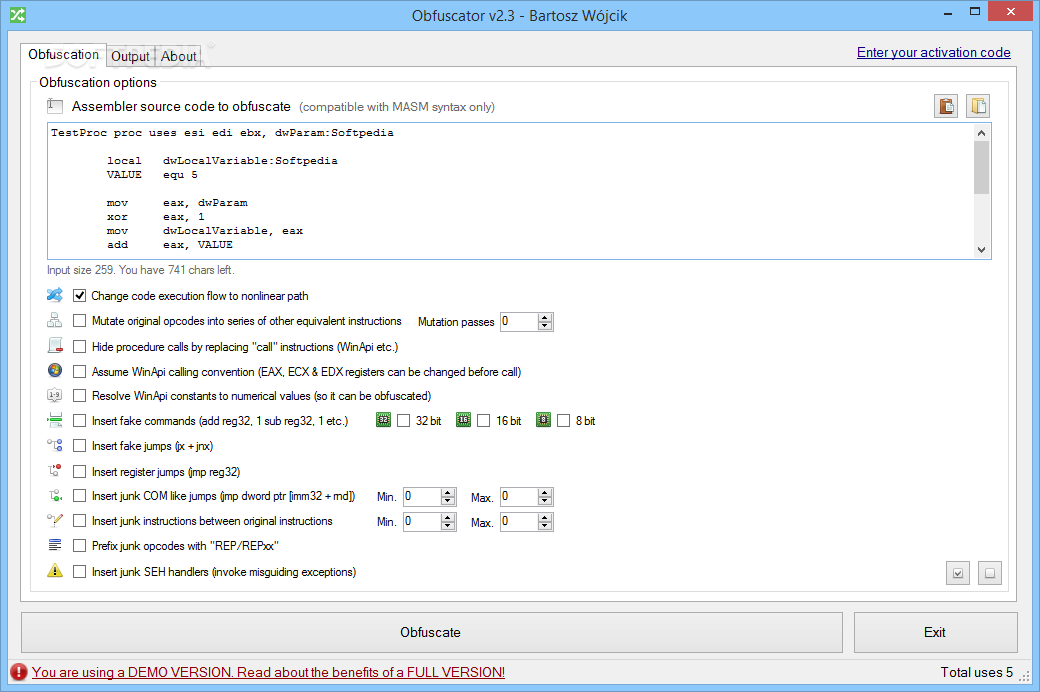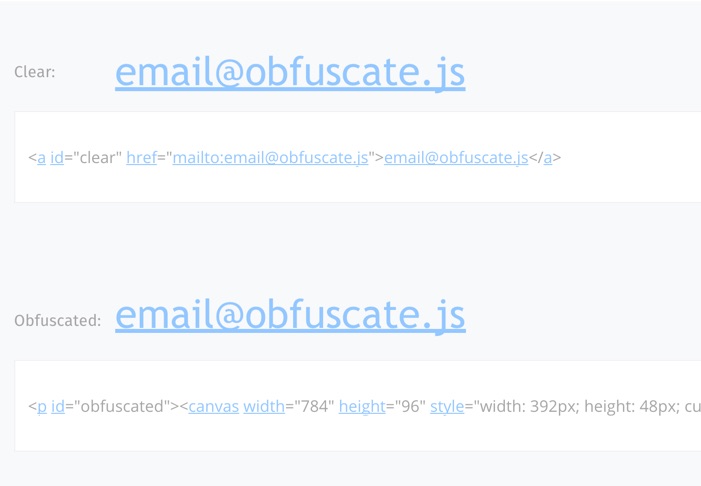
EMAIL OBFUSCATOR ONLINE INSTALL
EMAIL OBFUSCATOR ONLINE HOW TO
Learn how to opt-out of email marketing lists from the U.S.Review the privacy policies of all online services you use, including how they protect email address data, and in each case, pursue the opt-out option for sharing your email address with third-party business partners unrelated to the business with whom you work.They may not properly protect email address information collected from users. Don’t register a private email address with contests, surveys or any organization you don’t know well and thoroughly trust.That way, if one company sells its customer email address list or its customer database is hacked, you can shut down that one email address without affecting any of your other email address contacts and protect email address inboxes of other accounts. Better yet, consider using a disposable email address (DEA) service for non-personal emails, which allows you to create a custom email address for each business use contact.Create multiple email addresses, one for public Internet use to communicate with businesses and another for private use with known, trusted contacts.To minimize your exposure to junk email and hide your email address or prevent your private email address from being picked up by email harvester spam bots Many people carry out a basic search for information such as “how to protect email address on website” but then make the mistake of linking their obfuscated email address. Some common email domains, such as, ,, and Aol.com, are subject to dictionary attacks, where spammers create all possible forms of letter and number combinations as guesses for likely email addresses. In addition, they search blog comments, online user account profiles, Usenet and web forum posts, and more to find email addresses. Even when some people take measures to hide email address details, spammers search websites for links containing the href attribute prefix mailto: (used to start the default email client) and for strings of text adjoining the symbol (as used within an email address). Spammers collect email addresses from a variety of sources. Estimates put the annual figure for the costs of spam as high as $255 million in 2012, and that figure does not include the cost of lost productivity.

Then there are the staggering costs suffered by unsuspecting customers ripped off by scammers or by IT departments in cleaning up spam-borne malware infections. Internet service providers and companies operating their own email services bear the costs of scanning and filtering out all of this junk mail. Spam recipients are exposed not only to scams, but to phishing hazards and malware of all types, including viruses, Trojan horses, and web browser exploits. A recent study estimated that in 2012, up to 94% of all email sent across the Internet is spam – as many as 94 billion messages each day. Most spam messages contain messages for dubious products or services, including illegal/phony pharmaceuticals, casinos/gambling, and loan/financial scams.

Spammers use bots to search the Internet for email addresses and sell their collected lists to other spammers, who then use them to send out junk emails to unsuspecting users, often infected with malware or containing links to corrupted webpages. Unwanted, unsolicited emails, commonly sent in bulk (also known as email spam), are a serious problem for Internet email users.


 0 kommentar(er)
0 kommentar(er)
